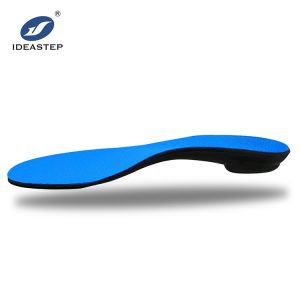
Flat feet, also known as fallen arches or pes planus, is a condition where the arches of the feet are flattened, causing the entire sole to come into contact with the ground. Normally, when a person stands, walks, or runs, the arches provide support and help distribute body weight evenly across the feet. However, in individuals with flat feet, this arch is either partially or completely collapsed.
Flat feet can be classified into two categories:
1. Flexible flat feet: In this type, the arches are visible when the feet are lifted off the ground, but they flatten when weight is placed on them. Flexible flat feet usually do not cause any pain or problems with mobility.
2. Rigid flat feet: In this type, the arches remain flattened both when the feet are lifted off the ground and when weight is applied. Rigid flat feet may cause pain and lead to issues with mobility and foot function.
Causes of flat feet can include:
1. Genetics: Some people are born with flat feet due to inherited foot structures.
2. Weak arches: Muscular weakness or laxity in the muscles and ligaments that support the arches can contribute to flat feet.
3. Foot injuries: Trauma or damage to the foot’s bones or connective tissues can result in flat feet.
4. Medical conditions: Certain medical conditions like arthritis, diabetes, or neuromuscular disorders can lead to the development of flat feet.
While flat feet themselves may not always require treatment, some individuals may experience associated symptoms or complications, such as foot pain, discomfort, or an altered gait. In such cases, treatment options may include:
1. Supportive footwear: Wearing shoes with good arch support and cushioning can help alleviate symptoms and provide better foot alignment.
2. Orthotic devices: Custom-made shoe inserts or orthotic devices can be prescribed to provide additional arch support and improve foot function.
3. Physical therapy: Specific stretching and strengthening exercises can help improve muscle strength, flexibility, and stability in the feet and ankles.
4. Medications: Over-the-counter pain relievers or anti-inflammatory drugs may be recommended to manage pain and inflammation associated with flat feet.
5. Surgical intervention: In severe cases where conservative measures fail to provide relief, surgical procedures may be considered to correct structural abnormalities or reconstruct the arches of the feet.
If you suspect you have flat feet or are experiencing foot pain or discomfort, it’s best to consult with a healthcare professional, such as a podiatrist or orthopedic specialist. They can evaluate your condition, provide an accurate diagnosis, and recommend appropriate treatment options based on your specific needs.
Related product links: https://www.aideastep.com/product/flat-foot-insoles-support-shoe-inserts-orthopedic-insole/
